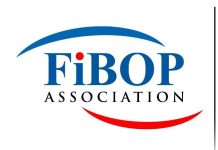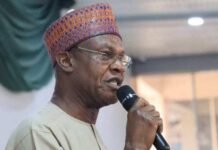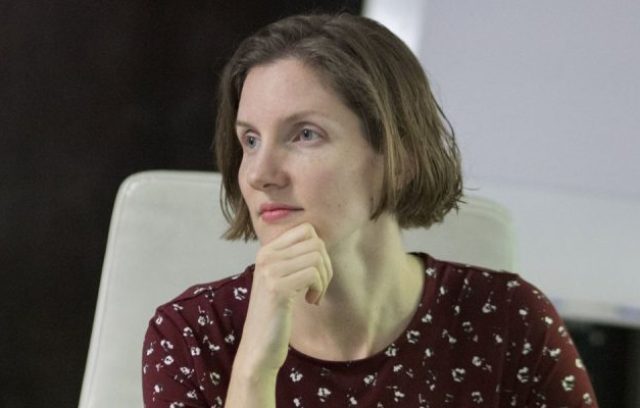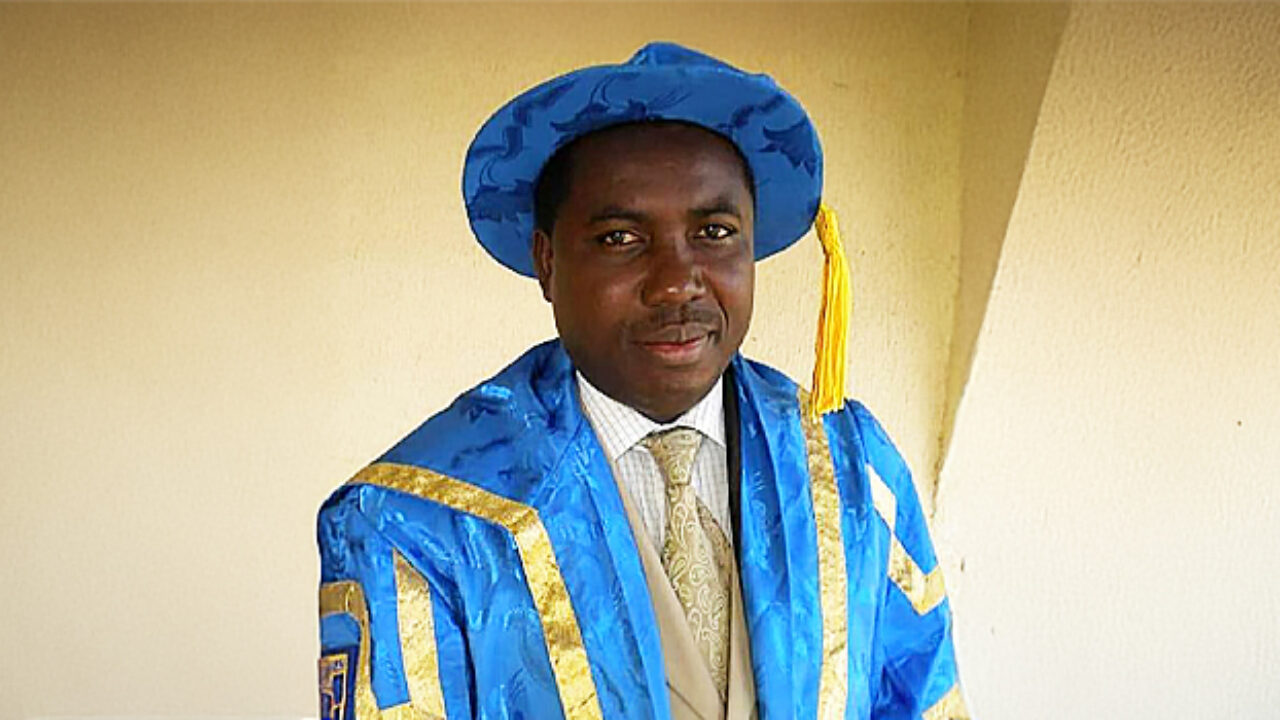A research conducted by Enhancing Financial Innovations and Access (EFInA) has revealed that women in northern Nigeria are more financially excluded than their peers in the south.
In a report tagged ‘Assessment of women’s financial inclusion in Nigeria’ EFInA explained that the inclusion gap experienced by women across different regions in the country might be the presence, in the north, of a more conservative socio-cultural and gender norms that impose restrictions on women’s access to financial services, irrespective of their religion.
The head of programmes at EFInA, Ms. Ashley Immanuel who presented the report in Lagos on Monday at a conference tagged ‘Unlocking the potential in every Nigerian: The path to inclusive economic growth,’ said although excluded women may not have access to financial services, they do have financial needs and ambitions.
The research found that when comparing financially excluded women with women who use financial services, some other trends emerge.
It stated that the geographic region a woman lives in is a significant factor influencing her likelihood of using financial services – with women in the south more likely to be included than those in the north – but a woman’s religion does not influence her likelihood of using financial services.
Besides, it said women who own mobile phones are more likely to be financially included than those who do not.
Women who are married, the report added, are more likely to be financially included than those who are single (never married).
It stated that women in the youngest and oldest age groups are more likely to be financially included than younger or older women.
The report showed that women’s adoption of financial services is influenced mainly by their levels of income, education, and trust in Financial Services Providers (FSPs), their marital status, and their community.
“The current structure of the financial system in Nigeria and its associated regulatory environment is one in which the cost of investment and the cost-to-serve for existing providers is not met with sufficient customer ability and willingness on the part of excluded women to pay.
“The customer group appears, therefore, to be a commercially inviable target for most existing providers. However, women continue to have financial needs and ambitions—as evidenced by their use of a range of informal products,” she said.
Immanuel said five segments of women emerged during the study.
They were ‘marginalised polygamous wife’, the ‘anxious early bride’, the ‘stoic widow’, the ‘ambitious micro trader’, and the ‘entrapped farmer.’
She said Nigeria faces a particularly significant and growing gender gap in financial inclusion.
“This gender gap is larger than in most other countries, and the gender gap is widening.
“In contrast, comparator countries in Africa such as Kenya, South Africa, Tanzania, and Uganda all exhibit a decreasing gender gap.
“The gender gap in Nigeria represents a major issue to be resolved if the country is to achieve the targets it set in its National Financial Inclusion Strategy (NFIS),” she said.
She advised that interventions focused on increasing and deepening women’s financial inclusion must focus on three key areas to achieve sustainable change and may be complemented by subsidy efforts to provide services in the meantime.
“First, the focus of efforts to boost women’s financial inclusion should shift beyond product innovation to address the underlying drivers of gender gaps, through more systematic efforts to address women’s incomes and economic empowerment, education and boosting trust in FSPs.8 Our analysis suggest that these are key to closing gender gaps and improving the financial inclusion of women.
“Targeted collaboration across stakeholders is needed to understand and identify options for improving the commercial viability of serving financially excluded women, even in the absence of improved income, education, and trust in FSPs. Such effort would need to outline the degree to which commercial viability is actually lacking and then determine interventions that could ‘tip the balance’.
“Stakeholders who choose to provide financial products and services to excluded women who, despite efforts in the first two categories, do not present commercial viability (yet), must recognise that, until viability is reached, such services will require subsidies. In any case, product offerings must be relevant, not just ‘aspirational’, and must meet women ‘where they are’. They must be suited to women’s low current levels of income, education and trust in FSPs,” she said.
In his remarks, the co-founder of Trans-Sahara Investment Corporation, Mr. Kyari Bukar said the effect of the northern and southern part is the dichotomy of inclusion.
He said climate change as well as the crisis in the northeast affects financial inclusion.
He explained that Lake Chad is as big as Oyo State “but today, only 10 per cent is irrigable.
“The people are basically farmers. Over 40 million people have their livelihood from there. But they have not farmed in the last nine to 10 years,” he added.
Also speaking, the managing director of Sterling Bank, Mr. Abubakar Suleiman said 10 per cent of the bank’s port folio is channeled to agriculture in the north.
However, he said financial inclusion is not about the poor people in the north but about how people, even those who own businesses could have access to finance.
He also said financial inclusion starts with productivity but added that “until we can demonstrate how people’s quality of life can be improved after financial conclusion, we will still be struggling.”
Suleiman stated that the key to human development is economic inclusion adding “once the basic needs are made available, access to finance is possible.”
However, he said money should be deliberately directed to women, not men.
Executive Summary 3
Our analysis found that the most important drivers of financial exclusion2 for both genders are lack of income, lack of education, and low trust in Financial Service Providers (FSPs) and that these factors also drive the gender gap.
They jointly explain 60% of lack of access for both genders. Because women have lower income, education, and trust levels than men, these factors also, to a large extent, explain the gender gap in overall exclusion5. In other words, women and men with similar levels of income, education, and trust in FSPs are approximately equally likely to be financially excluded yet women typically have much lower levels of income and education than men do. Income, education, and trust in FSPs are so important that the effects of other factors on exclusion—that are commonly believed to be strong and that are often the focus of interventions—are dwarfed by comparison.
Income and education are generally known to be gendered factors.
Amongst others, socio-cultural drivers and gender expectations lead to women having lower levels of income and education then men. Thus, to overcome the gender gap in financial inclusion, these gendered drivers should be understood and tackled as the core binding constraints.
***Gender plays a significant role informal financial inclusion.
Women are less likely to be formally included than men, even when controlling for levels of income, education and trust. Given the NFIS’s ambition to increase formal inclusion as the preferred status, it is vital to look beyond absolute exclusion and to understand the gendered drivers of these differences when designing interventions.
**Three additional variables complement the dominant factors (levels of income, education and trust in FSPs) when looking at formal and informal-only inclusion.
The first, mobile phone ownership, acts as a powerful predictor of formal financial inclusion.
The second, location in rural areas, corresponds with a greater likelihood that individuals, even at higher levels of income and education, will rely only on informal services. And the third, marital status, has a complex and nuanced effect on informal-only inclusion.
***Our discussions with excluded women confirm that, even though they do have financial needs and ambitions, low income limits the need for financial services that they themselves perceive.
*Approximately half of the Nigerian population earns less than ~700 Naira per day7, and those we spoke with did not feel they had enough income to save, make investments, or take risks on loans.
They devote the little income they have to living costs (e.g., food, rent, cooking fuel, and clothes), their children’s education, and, occasionally, family and community events (e.g., births, weddings, and funerals). That is not to say that they have no need for relevant financial products and services.
For example, structured savings solutions could support women’s efforts to save effectively and manage their often competing daily needs.
Similarly, financial products that enable traders to manage business purchases and savings could ease financial setbacks and help low-income populations in Nigeria, particularly women, avert volatility.
**FSPs do not see a sufficient business case in serving the financially excluded, but the underlying fact-base can be strengthened.
Today’s cost structures, licensing requirements, and other operational considerations such as credit risk management, combine with the existence of opportunities with a more attractive risk-adjusted return to dissuade (most) FSPs from targeting low income populations; they simply have more commercially attractive alternatives.
Although FSPs consistently mention this lack of commercial viability, the extent to which low-cost solutions could be viable without improving livelihoods, is unknown. There is no in-depth insight into cost structures, opportunities for economies of scale, cost savings and joint investments, or the ability and willingness of customers to pay. Each of these elements should be understood in order to determine the actual gaps in commercial viability and to prioritise the interventions and innovations best suited to overcome this lack of viability.
Yet, creating that insight will be resource-intense and may require collective action, as it is unlikely to be a responsible investment for any one single provider.
“Interventions focused on increasing and deepening women’s financial inclusion must focus on three key areas to achieve sustainable change and may be complemented by subsidy efforts to provide services in the meantime.
“First, the focus of efforts to boost women’s financial inclusion should shift beyond product innovation to address the underlying drivers of gender gaps, through more systematic efforts to address women’s incomes and economic empowerment, education and boosting trust in FSPs.8 Our analysis suggest that these are key to closing gender gaps and improving the financial inclusion of women.
“Targeted collaboration across stakeholders is needed to understand and identify options for improving the commercial viability of serving financially excluded women, even in the absence of improved income, education, and trust in FSPs. Such effort would need to outline the degree to which commercial viability is actually lacking and then determine interventions that could ‘tip the balance’.
“Stakeholders who choose to provide financial products and services to excluded women who, despite efforts in the first two categories, do not present commercial viability (yet), must recognise that, until viability is reached, such services will require subsidies. In any case, product offerings must be relevant, not just ‘aspirational’, and must meet women ‘where they are’. They must be suited to women’s low current levels of income, education and trust in FSPs,” she said.
***When addressing the gender gap in income, education and trust in FSPs, the highly contextual, gendered, and multifaceted nature of these issues needs to be considered.
Income, education, and trust in FSPs are gendered and interlinked. For example, poverty, gender norms, and traditional practices, including early marriage, increase the risk of premature school dropout and unemployment, particularly for women. Nigeria exhibits a large gender gap in education9. The net enrolment rate at the primary school level is 56% for girls and 61% for boys10. The gender gap for completion widens from 9% in primary school to 14% in secondary school11. Because of patriarchal traditions, in some cultures, parents invest in male children whom they recognise as future heads of households as opposed to girls whom they view exclusively as current and future home-makers. Such perceptions mean girls are more often burdened with household chores.
This limits their capacity to regularly attend classes or pursue gainful employment outside of the home. Restricted access to education also impedes women’s access to high quality, well-paying jobs. As a result, women are more likely than men to be vulnerably employed or unemployed. In fact, their male counterparts are nearly twice as likely to hold wage-earning jobs.
***Consequently, there is an urgent need for stakeholders to collaboratively identify and address the macroeconomic and socio-cultural determinants of women’s lower access to education and income-generating opportunities.
Furthermore, stakeholders must understand the drivers of trust in FSPs, develop specific interventions that effectively address the gender gap, and identify appropriate pathways for implementation of these solutions.
***Targeted knowledge gaps have surfaced in this work, which should guide stakeholders in the design and implementation of their interventions.
This research has questioned fundamental assumptions and has not necessarily replaced those with a new set of ‘answers’. Thus, a more in-depth understanding is needed of some of the factors and their effects, and specifically of some of the underlying, gendered drivers of these primary factors.
Introduction
Zzzzzzzzzzzzzzzzzzzzzzz
Progress towards financial inclusion has been adversely affected by
unforeseen socioeconomic factors such as the economic recession,
the precarious security situation in parts of northern Nigeria, and
other factors such as the slow uptake of Digital Financial Services
(DFS).
Nigeria has the largest number of people living in extreme poverty in
the world. Nearly 50% of the population endures extreme poverty,
the unemployment rate stands at around 23%15, and a significant
portion of Nigerians lack adequate education.
Not surprisingly, financial exclusion stands at 36% for women and 24% for men17. The relative gender gap18 related to financial inclusion is ~20-30%19, placing Nigeria below its peers. Since 2012, although women’s exclusion has dropped, the gender gap has grown, revealing that men’s inclusion has improved more rapidly than women’s20. The National Financial Inclusion Strategy (NFIS) was launched in 2012 to reduce financial exclusion to 20% of the adult population. However, according to the revised NFIS, Nigeria is not on track to achieve its 2020 targets.
This study set out to identify what causes the gender gap in financial inclusion and how it can be closed.
The approach and focus of the study was not understanding overall drivers of exclusion, but specifically surfacing the drivers of higher exclusion in women, than in men. Ultimately, the study aimed to answer the following questions:
• How do access, usage, and supply of financial services differ between men and women, and,
most importantly, what drives this?
• What are the financial needs and ambitions of excluded women?
• What are the perspectives of current Financial Service Providers? Why do they not target or
otherwise reach women in greater proportion and numbers?
• What can be done to improve women’s access to and use of financial services in Nigeria?
• To the extent that women in Northern Nigeria encounter different and perhaps even greater
challenges with regards to the above topics, what can be done to address their specific needs?
For this study, we implemented a mixed methods approach.
Specifically: we conducted a desk research review of existing data sources, including Findex 2017 and EFInA Access to Financial Services in Nigeria 2018 Survey, to understand the current state of the gender gap in Nigeria compared to its peer countries; we interviewed financial service providers and non-financial support organisations to better understand the current financial services ecosystem in Nigeria; we administered a nationally representative quantitative survey focused on identifying drivers of the gender gap; and we performed qualitative analysis (based on human-centred design) to explore the key themes emerging from the quantitative survey in an effort to understand the needs, behaviours, and motivations of different segments of excluded women in Nigeria, explore the gaps that most impact women’s access to financial services in Nigeria, and identify characteristics of financial products and services that could meet the needs of excluded women. We also engaged a Project Management Team (PMT) (including senior members from EFInA and the Central Bank of Nigeria) and gender experts from a range of organisations with both Nigeria-specific and global expertise.
Zzzzzzzzzzzzzzzz
***The gender gap in financial exclusion is significantly attributed to the gap between men and women’s levels of income, education and trust in FSPs.
These factors jointly explain25 ~60% of the lack of access for both genders. The gender gap
in overall exclusion can, to a large extent, be attributed to the facts that women experience
significantly lower educational attainment than men – impacting their earning capacity – and
women have lower levels of trust in FSPs than men (see Figure 2). In other words, women and
men with similar levels of income, education, and trust in FSPs are approximately equally likely to be financially excluded.26 Although gender is not a direct driver of financial exclusion, income and education are generally known to be gendered factors – amongst others, socio-cultural drivers and gender expectations lead to women having lower levers of income and education then men.
Thus, the recommendations articulate that to overcome the gender gap in financial inclusion,
these gendered drivers should be understood and tackled as the core binding constraints.
This should be prioritised over tackling other aspects such as designing product characteristics that appeal to women as those are not binding constraints to inclusion.
*The gender gap in financial exclusion is significantly attributed to the gap between men and women’s levels of income, education and trust in FSPs.
These factors jointly explain25 ~60% of the lack of access for both genders. The gender gap
in overall exclusion can, to a large extent, be attributed to the facts that women experience
significantly lower educational attainment than men – impacting their earning capacity – and
women have lower levels of trust in FSPs than men (see Figure 2). In other words, women and
men with similar levels of income, education, and trust in FSPs are approximately equally likely to be financially excluded.26 Although gender is not a direct driver of financial exclusion, income and education are generally known to be gendered factors – amongst others, socio-cultural drivers and gender expectations lead to women having lower levers of income and education then men.
Thus, the recommendations articulate that to overcome the gender gap in financial inclusion, these gendered drivers should be understood and tackled as the core binding constraints.
This should be prioritised over tackling other aspects such as designing product characteristics that appeal to women as those are not binding constraints to inclusion.
Lower levels of income, education, and trust in FSPs drive higher rates
of financial exclusion in rural areas.
28 When controlling for all factors measured in the survey, the distinction between rural and urban is not statistically significant.
Trust is measured by responses to the question, “What kind of provider do you trust the most?”
The rural-urban differential in overall exclusion rates is primarily impacted by lower income and education, and lack of trust in FSPs. Figure 3 shows that overall exclusion in rural communities is 1.7 times that in urban communities. However, our analysis shows that the difference is not statistically significant when controlling for other factors, most importantly, levels of income, education, and trust in FSPs.
Nigerians in rural areas are less likely to use formal financial services than those in urban areas.
A scarcity of access points (driven by limited critical mass and thus commercial viability) means that even for rural populations with sufficiently high levels of income, education and trust, formal financial services are hard to reach.
For this reason, such segments rely more heavily on informal services (see the next findings).
Figure 3: Exclusion and levels of




















































